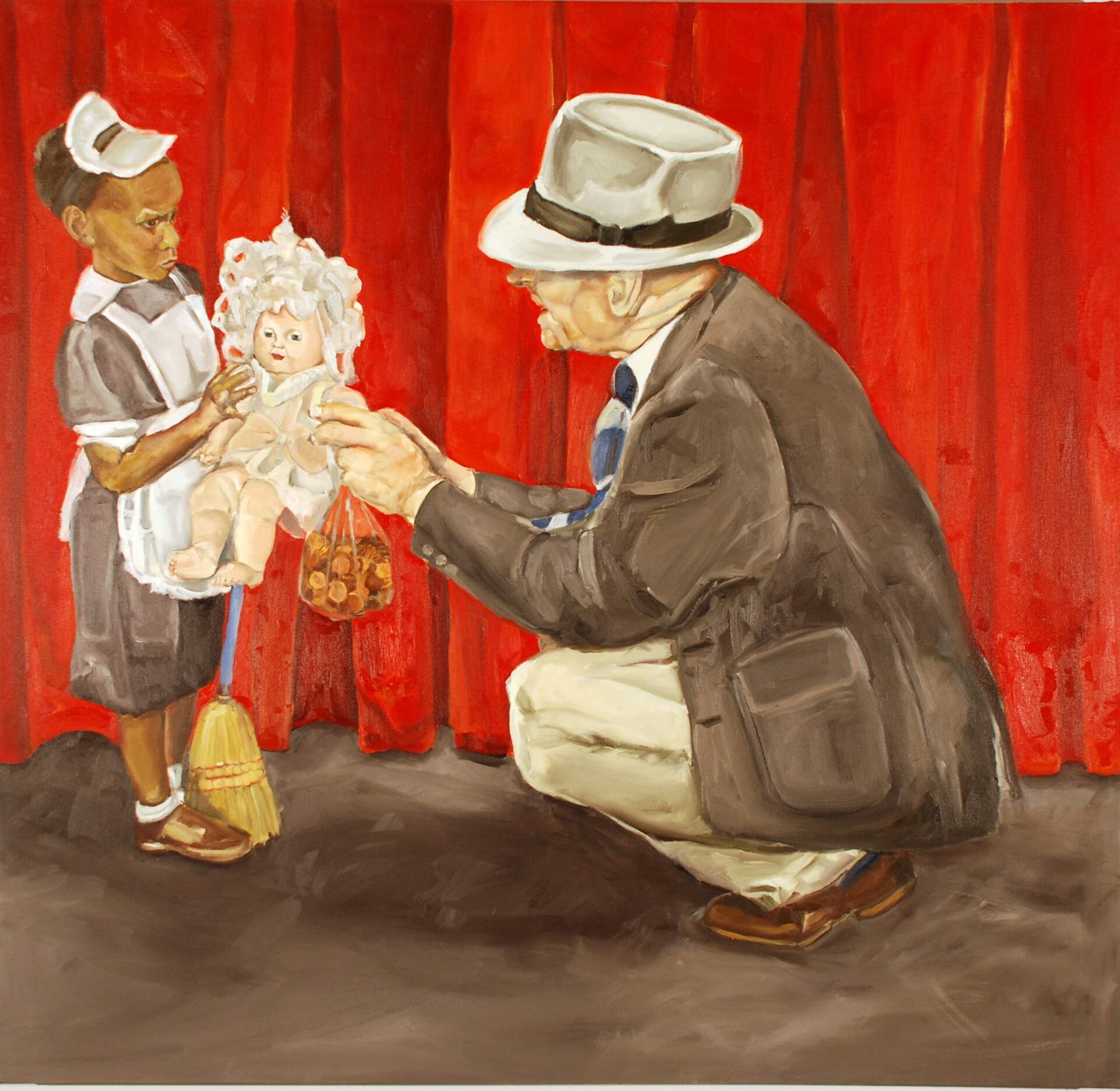Patricia Carter First Prize #2
1997
oil on canvas
50 x 50 inches
The M&T Bank Collection at the Burchfield Penney Art Center, 1999
Adults, older girls, shops, magazines, newspapers, window signs—all the world had agreed that a blue-eyed, yellow-haired, pink-skinned doll was what every girl child treasured. “Here,” they said, “this is beautiful, and if you are on this day ‘worthy’ you may have it.” — Toni Morrison, The Bluest Eye
Patricia Carter produces monotypes and paintings that represent her interest in challenging stereotypes of race and gender, particularly African American women’s roles as nannies, cleaners, and domestic workers. In a similar vein, First Prize #2 questions the lack of progress in American civil rights. The young girl’s costume implies a limited career choice as a maid, but it earns “First Prize.” The dubious award in the form of a Caucasian doll figuratively puts her in her place as a servant by an unsavory looking Caucasian man, who represents the worst of American regressive social policies. —Nancy Weekly
Patricia Carter is a prominent African American painter whose work addresses the social and political problems of racial inequality. First Prize #2 deals specifically with the experience of African American women in the South during the 1940’s. The painting explores the complex role of the black maid, one of the only professions available at that time. As the girl’s costume shows, the maid is both servant and surrogate-mother to white children, represented by the baby doll handed to the girl by the proportionally dominant white male figure. The girl frowns skeptically, calling into question the validity of being rewarded for being subservient. —Joan Vita Marotta, 2002
